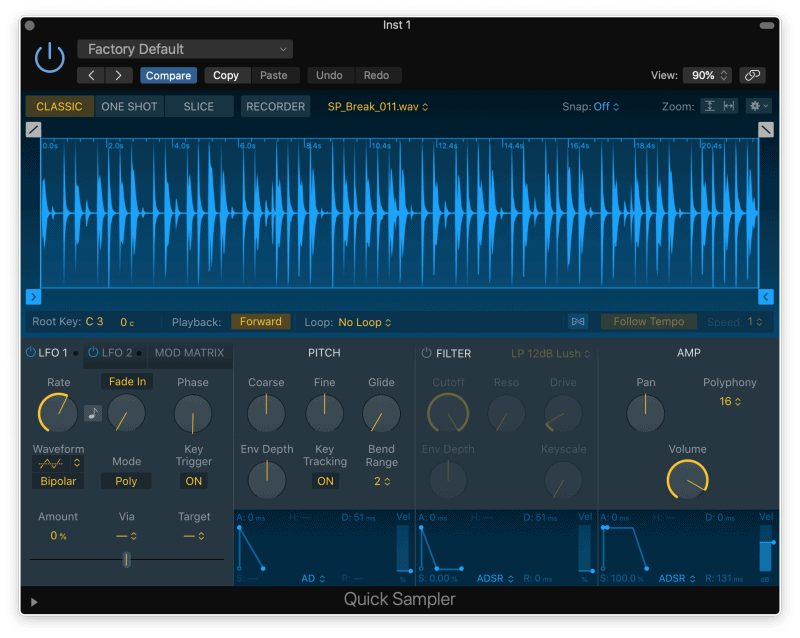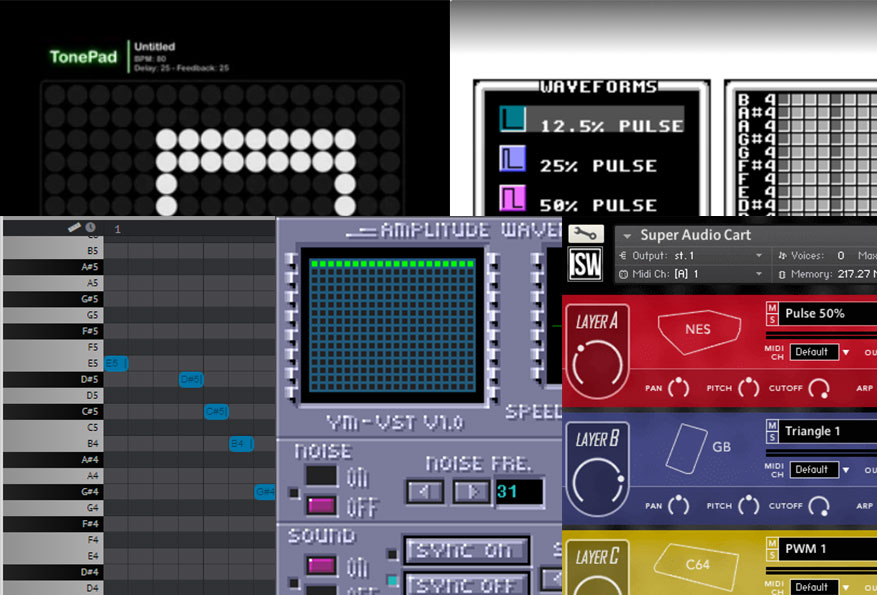

#Logic pro 8 bit sound software#
In fact, one of the great things about software synths is that they’re accessible to anyone that can operate a DAW. Not every synthesist is a keyboard player as is often thought. In addition to being aware of the parameters and modulation choices, you should consider the basic method that will be used to play the sound. How Will the Sound Be Played or Triggered Applying modulation to filtering parameters is extremely common and tons of variations are possible from a single source.

There are multimode filters and sometimes multiple filters with various routing options available. Not only is filtering the fundamental process behind subtractive synthesis, it is also a common section in most types of virtual synths. Know the Filtering Capabilities of Your Instrument

A guitarist is not guessing what will happen at any given moment, he/she has a deep understanding of the instrument’s capabilities that can only come from familiarity and years of practice. Think of playing an instrument like the guitar. Knowing this information will expand your mental and sonic palette so you can vividly imagine what sounds are possible. It is crucial to understand what each parameter in a synth does and what the effect of modulating that value will have on the sound. Modulation involves changing the parameters of sound by various methods such as LFO’s ( Low-Frequency Oscillators), envelopes, step sequencers, recorded morph pad movements, etc. Very few synth patches exist without any modulation as part of their sound. Know the Modulation Capabilities of Your Instrument That said, I am a big believer in experimentation and the power of serendipity, so if you have the time - why not go for it? It makes little sense to try and wrestle a particular type of sound out of an instrument that is not well-equipped to deliver the desired result. If you have no idea what a certain instrument is good at, do a quick scan of the existing presets to get a clue. Also, certain synthesis methods are more appropriate than others for certain types of sound, so it makes sense to have some idea what a particular synthesizer does well.įor instance, component or physical modeling synths are particularly good at plucked and percussive type sounds.

or is it a hybrid instrument that uses a combination of methods?īeing aware of how the sound is generated is fundamental to knowing what the available parameters are and how they contribute to the sound. What sort of synthesis method is employed? Is it Frequency Modulation, Additive Synthesis, Wavetable Synthesis, Subtractive Synthesis, Physical Modeling, etc. Investigate how this instrument generates sound. Let’s say you have a particular instrument you plan to use for whatever reason. Know the Synthesis Method of Your Instrument What follows is one method to approach building a new sound from the ground up. Be aware however, the process takes time, patience and some fundamental knowledge about synthesis. Depending on the variety and organization of onboard sounds, you can often find a sound that suits your needs, or at least one that is close enough that it can be modified.įor the adventurous sound designer/producer, building a sound from scratch can lead to fruitful results that are unique and unexpected. There are tons of presets that come with most virtual synthesizers and many have expansion packs available for an additional cost.


 0 kommentar(er)
0 kommentar(er)
